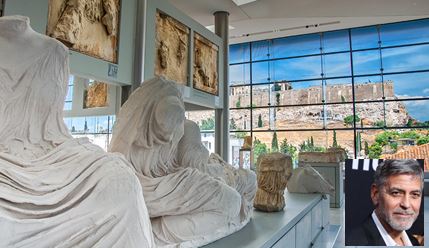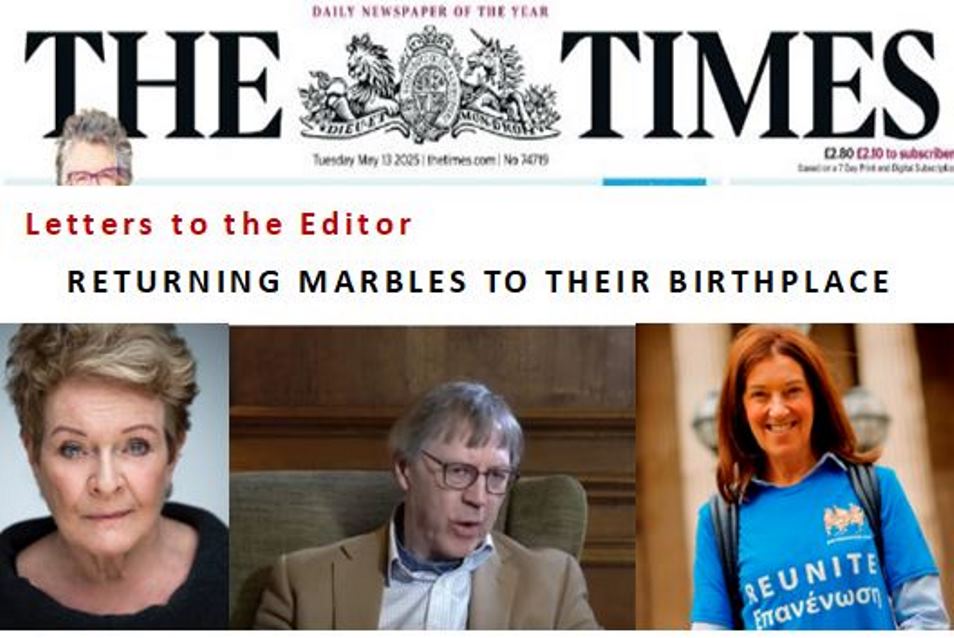Architectural treasure was broken apart 200 years ago.
On Sunday, Oct. 14, three huge cranes began to move crates containing priceless sculptures from the 600-feet high Acropolis of Athens to a new museum on the plain below. The state-of-the-art museum, built in direct view of the Parthenon, will be home to the temple's artistic treasures.
Dubbed "the move of the century," it has reopened — perhaps more vehemently than ever — the issue of the reunification of the Parthenon marbles, previously called the Elgin marbles, with the country, culture and structure from which they were separated more than 200 years ago.
The temple of the goddess Athena, commonly known as the Parthenon, was built between 447 and 432 B.C., at the highpoint of the Greek Golden Age. Designed by two brilliant architects, Ictinus and Kallikrates, the building was conceived and constructed not only as the perfect architectural form but also as a universal symbol of humanity. Over the course of more than 2,500 years, it has exercised a tremendous influence on western architecture and remains one of the highest expressions of the human spirit.
It is from this unique building that, in 1801, Lord Elgin removed a large number of architectural and structural pieces, taking advantage of his position as British ambassador to the Ottoman Empire, which occupied Greece at the time. No fewer than 56 panels from the frieze, 15 metopes, and 19 pedimental sculptures — along with a number of architectural members, including parts of columns supporting the entablature — were taken by Elgin's agents and eventually deposited in the British Museum.
Greece eventually escaped Ottoman rule, but demands for repatriation of its antiquities — many of which, after centuries of plunder, had ended up in European museums — generally fell on deaf ears.
Britain toyed with the idea of returning the Parthenon marbles several times in the last two centuries. She came very close to doing so after World War II as a gesture of gratitude to the Greek people for their heroic fight against the Nazis. But it never happened.
In 1981, Greece officially petitioned the British government for the return of the marbles, arguing that they are not just any pieces of sculptures, but integral parts of a unique monument. Since then, international support for this request has been growing steadily.
UNESCO and the European Parliament have passed resolutions asking Britain to return the marbles, and numerous committees have been formed in countries around the world, including the United States, in support of the cause.
Why should Americans care? Our society prides itself on morality and justice, and our nation has a long and outstanding tradition of defending those principles. There is no justification for us to avoid the issue of a unique part of world cultural heritage remaining fragmented.
The importance of the Parthenon as a universal symbol of humanity can be fully assessed only when the integrity of the building is restored. The pieces removed by Elgin are not free-standing works of art meant for exhibition in a museum 1,500 miles from their original setting. To the contrary, they are architectural sculptures, and several of them serve a functional use in the building. Removing them from the monument stripped them of their meaning, importance and essence. If we are to conserve and preserve this unique building for future generations, we must ensure that the original concept of the creators of the Parthenon is restored.
Times have changed. The 19th century imperialistic mentality that brought the marbles to London is a thing of the past, replaced by an ideal that prizes international cooperation and good will. Several public opinion polls taken in the last 10 years in England have indicated that a large part of the British public and the majority of British members of parliament would like to see the marbles returned to Greece.
Under the auspices of UNESCO, the Parthenon now is undergoing extensive restoration using the best materials and latest techniques known to science; the museum where the sculptures can be exhibited properly is ready for them.
The British Museum now has the opportunity to align itself with the best principles of our time. A gesture of good will towards the international community will reunite the Parthenon with its exiled sculptures.
Understand: What is at stake here is not the fate of a few pieces of sculpture, things remote from us in time and space. The issue is our collective human conscience, our attitude towards the preservation of a unique monument and the cultural heritage of the world: our heritage.
Michael B. Cosmopoulos, a professor of archaeology, holds the Hellenic Government-Karakas Foundation endowed chair of Greek studies at the University of Missouri at St. Louis.





Comments powered by CComment